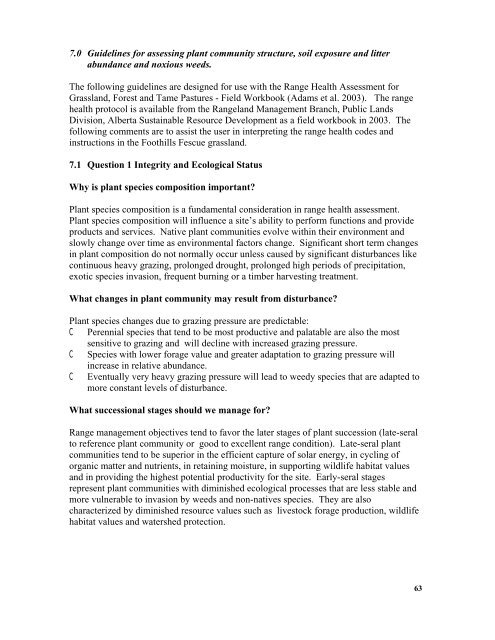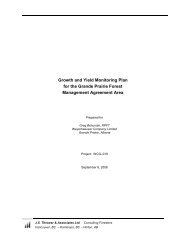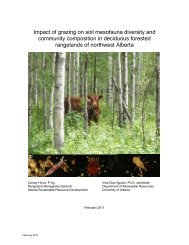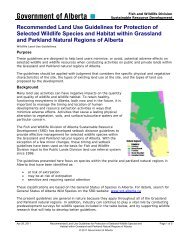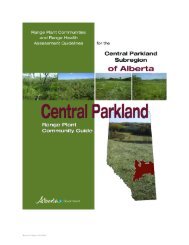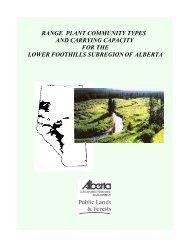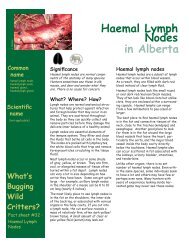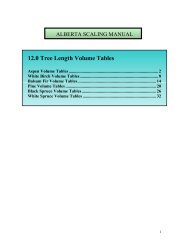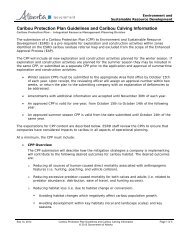Foothills Fescue Range Plant Community Guide - Sustainable ...
Foothills Fescue Range Plant Community Guide - Sustainable ...
Foothills Fescue Range Plant Community Guide - Sustainable ...
Create successful ePaper yourself
Turn your PDF publications into a flip-book with our unique Google optimized e-Paper software.
7.0 <strong>Guide</strong>lines for assessing plant community structure, soil exposure and litter<br />
abundance and noxious weeds.<br />
The following guidelines are designed for use with the <strong>Range</strong> Health Assessment for<br />
Grassland, Forest and Tame Pastures - Field Workbook (Adams et al. 2003). The range<br />
health protocol is available from the <strong>Range</strong>land Management Branch, Public Lands<br />
Division, Alberta <strong>Sustainable</strong> Resource Development as a field workbook in 2003. The<br />
following comments are to assist the user in interpreting the range health codes and<br />
instructions in the <strong>Foothills</strong> <strong>Fescue</strong> grassland.<br />
7.1 Question 1 Integrity and Ecological Status<br />
Why is plant species composition important?<br />
<strong>Plant</strong> species composition is a fundamental consideration in range health assessment.<br />
<strong>Plant</strong> species composition will influence a site’s ability to perform functions and provide<br />
products and services. Native plant communities evolve within their environment and<br />
slowly change over time as environmental factors change. Significant short term changes<br />
in plant composition do not normally occur unless caused by significant disturbances like<br />
continuous heavy grazing, prolonged drought, prolonged high periods of precipitation,<br />
exotic species invasion, frequent burning or a timber harvesting treatment.<br />
What changes in plant community may result from disturbance?<br />
<strong>Plant</strong> species changes due to grazing pressure are predictable:<br />
C Perennial species that tend to be most productive and palatable are also the most<br />
sensitive to grazing and will decline with increased grazing pressure.<br />
C Species with lower forage value and greater adaptation to grazing pressure will<br />
increase in relative abundance.<br />
C Eventually very heavy grazing pressure will lead to weedy species that are adapted to<br />
more constant levels of disturbance.<br />
What successional stages should we manage for?<br />
<strong>Range</strong> management objectives tend to favor the later stages of plant succession (late-seral<br />
to reference plant community or good to excellent range condition). Late-seral plant<br />
communities tend to be superior in the efficient capture of solar energy, in cycling of<br />
organic matter and nutrients, in retaining moisture, in supporting wildlife habitat values<br />
and in providing the highest potential productivity for the site. Early-seral stages<br />
represent plant communities with diminished ecological processes that are less stable and<br />
more vulnerable to invasion by weeds and non-natives species. They are also<br />
characterized by diminished resource values such as livestock forage production, wildlife<br />
habitat values and watershed protection.<br />
63


